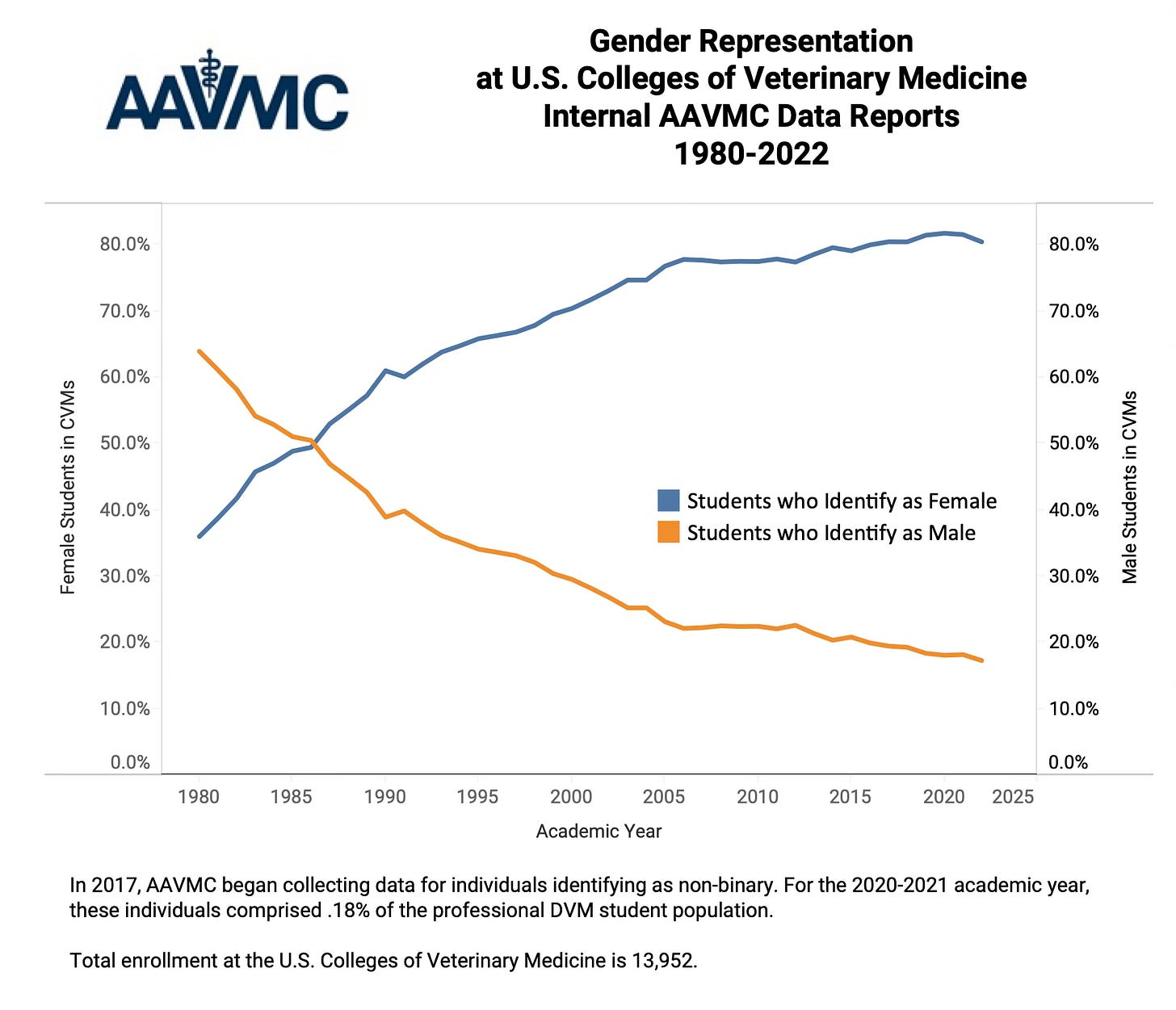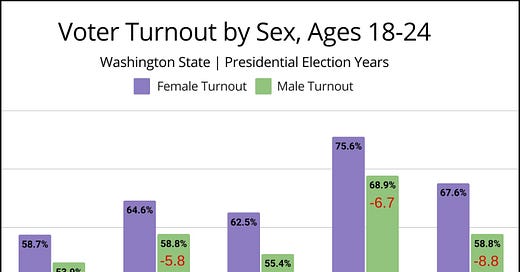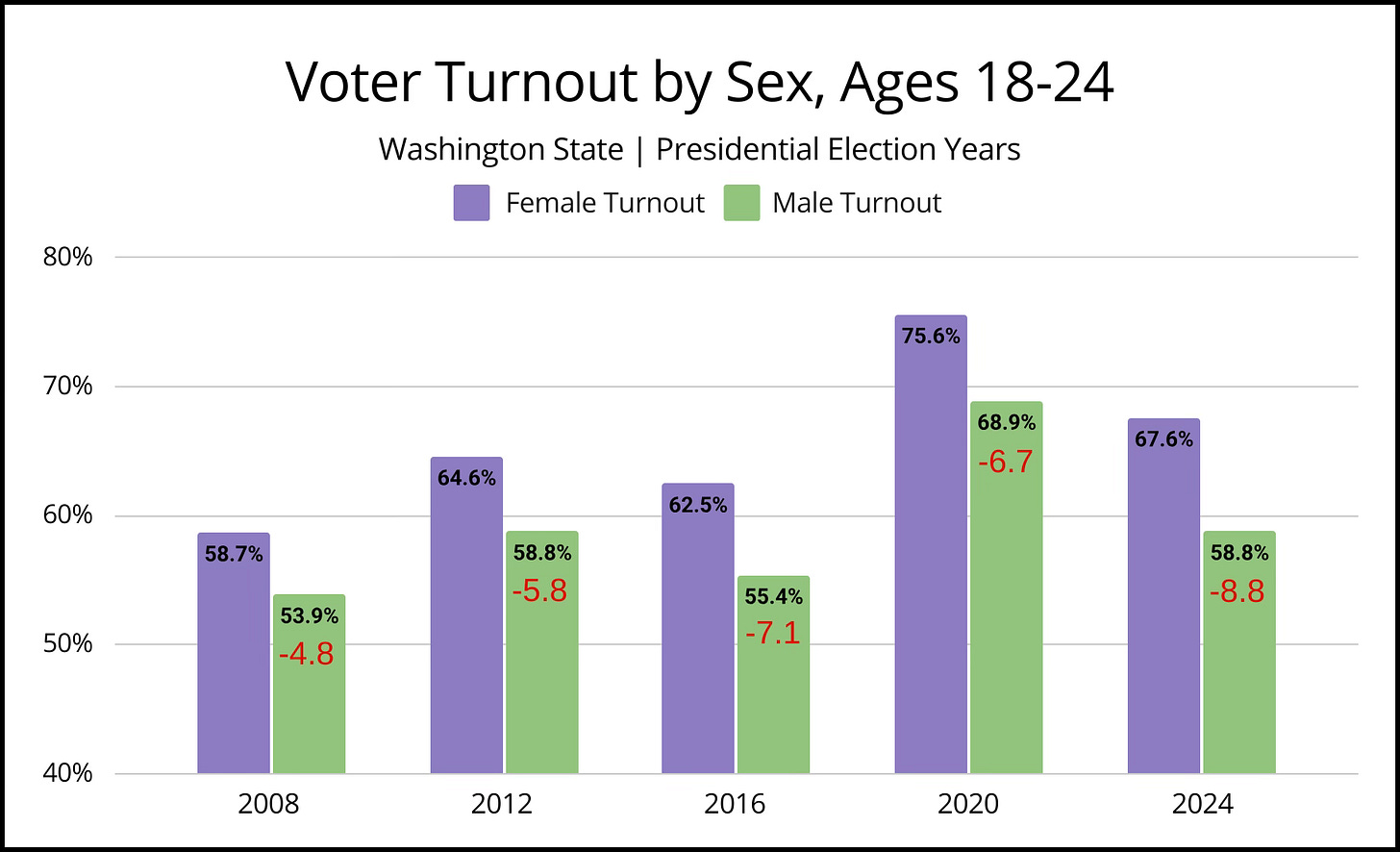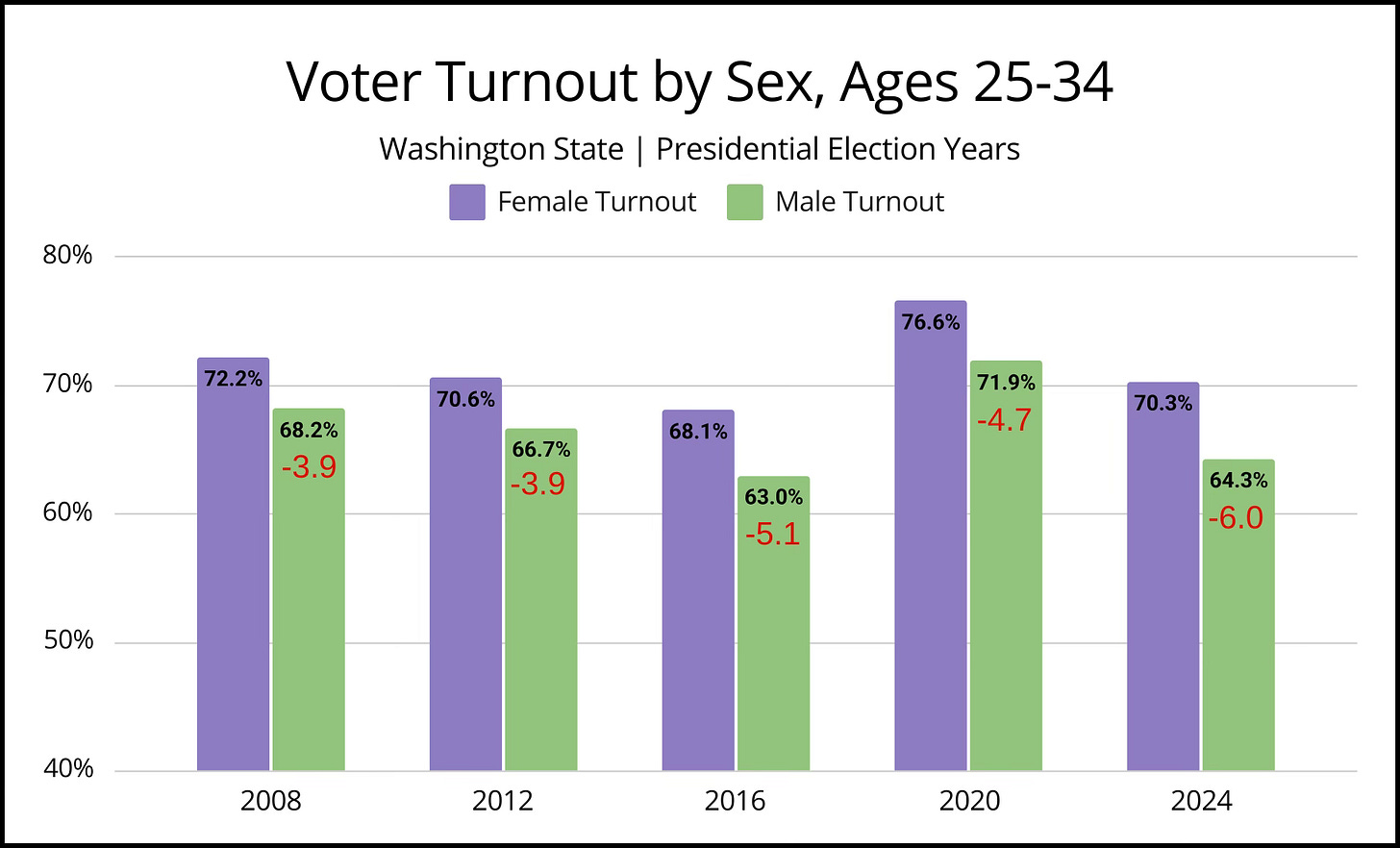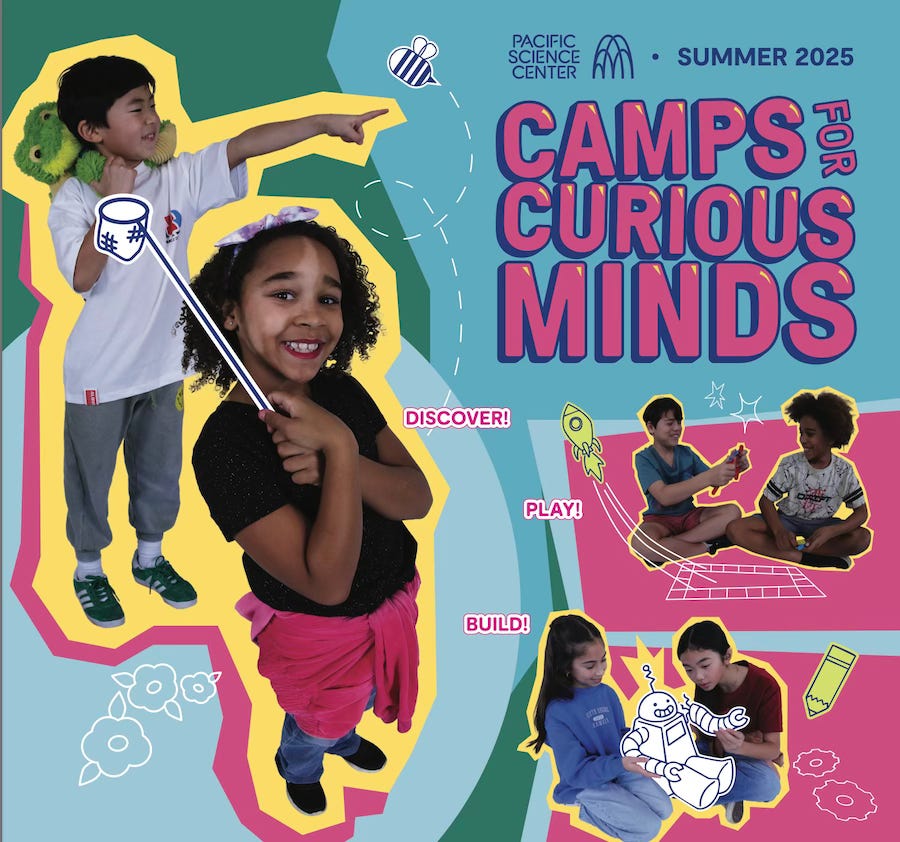Despite Talk of 2024 'Bro Vote', Young Men's Voting Participation Dropped Even Further Behind
Plus: Cassie Jaye, creator of men's issues documentary, makes rare public appearance, and we're asking Pacific Science Center to offer one boys-focused summer camp.
A healthy representative democracy functions best with broad engagement that reflects the population being represented. In Washington there is a substantial deficit in voting participation among young men.
Data from the Washington Secretary of State’s Office shows a larger difference in voter turnout between young men and young women in the 2024 election than in each of the previous elections for which data are available: 2008, 2012, 2016, and 2020.
In other words, our prediction last year was right.
Last June, we downloaded historical voter turnout data, made some tables and graphs, and wrote an article posing this question: Should we be concerned that young men in Washington are voting at lower rates than young women?
We included the following prediction:
The share of Washington men ages 18 to 34 who vote in the November 2024 election will be between 5 and 10 percentage points lower than the share of women the same age who vote. That will amount to around 50,000 fewer votes.
That prediction was correct — despite the 2024 election narrative about the Trump campaign mobilizing low-propensity young male voters (the ‘bro vote’). That narrative may have played out in terms of above-average rates of voting among young men in swing states (we haven’t checked state-by-state whether that is the case), but here in Washington no election in recent history has seen young men underperform more severely compared to their female peers, as seen on the graphs below.
Turnout by men ages 18 to 24 was 8.8 percentage points lower than turnout by women (58.8% compared to 67.6%) — the largest gender disparity seen yet for that age group, among available data. (The 2008 election is the earliest presidential-year election for which voting data disaggregated by sex are available.)
Turnout by men ages 25 to 34 was 6 percentage points lower than turnout by women (64.3% compared to 70.3%) — also the largest gender disparity seen yet for that age group.
In total, male voters in Washington ages 18 to 34 handed in 44,678 fewer ballots in the 2024 general election than female voters of the same age, according to Secretary of State data.
Turnout by men of all ages was 3.2 percentage points lower than turnout by women of all ages (77.5% compared to 80.7%) — the largest gender-disparity seen yet, among available data. In Washington men cast almost 200,000 fewer votes than women in the 2024 election. Just shy of 4 million people voted in total.
‘Could signal potential danger’
A recent commentary from the Brookings Institution by Elaine Kamarck and Jordan Muchnick speaks to the importance of this topic.
First the writers acknowledge: “Young men have repeatedly been found in recent years to be apathetic towards voting, with young women in recent election cycles constantly turning out to vote at higher rates than young men.”
Then they speak to why this matters: “From a societal perspective, it could signal potential danger if young men feel less tied to democracy and feel no need to participate in the democratic process while increasingly becoming disheartened with their social status. The incentive for change and action may be there, but not through democratic means.”
Given the young male voting deficit, perhaps male-focused voter registration drives and get-out-the-vote efforts are warranted.
Should we care if gender is predictive of one’s likelihood to vote?
In a different article last year, we pointed out a disappointing move made by Democracy Dawgs, a coalition based at the University of Washington made up of students, staff, faculty, and community partners (see: Action Plan for Increasing Voting Among University of Washington Students Neglects Male Gender Gap). Democracy Dawgs created an 8-page action plan for increasing voting rates among students at UW. Their plan showed a determination to shrink disparities in voter participation across various demographic dividing lines. But when it came to addressing the disparity between UW’s male and female students their plan was silent, even though Democracy Dawgs possessed data clearly showing a gender gap in voter turnout.
Civic engagement is fundamental to the shaping of laws, policies, and public services in a way that best serves the people. We should aspire to democratic elections in which one’s sex or gender is not predictive of one’s likelihood to vote.
Documentarian Cassie Jaye Makes Rare Public Appearance
If you haven’t watched the 2016 film The Red Pill, we recommend watching it. It is the most consequential feature-length documentary on men’s issues to date, and it’s available free on YouTube. The filmmaker, Cassie Jaye, is originally from Snohomish County here in Washington. After making the film, Cassie (fittingly) became a mother to two sons.
“My approach to making The Red Pill documentary was different than with the films I had made about women’s issues and LGBTQ issues. For The Red Pill I was entering the project as an angry skeptic, to be honest. I was not going in with a humanitarian mission, like I had with my other films. I was going in essentially under cover because I was a staunch feminist filmmaker looking to expose what I believed was a misogynistic hate group.” - Cassie Jaye
Since completing the promotional tour for The Red Pill, Cassie has seldom spoken publicly about the advocacy movement for boys and men. Recently, she was the featured speaker at an online event commemorating the 10 year anniversary of the creation of the Canadian Centre for Men and Families. Her remarks begin at 1:01:38 in the video.
Pacific Science Center Should Host One Boys-Focused Summer Camp
The Pacific Science Center’s 2025 summer camp catalog shows they will be hosting over 100 non-gender-specific camp sessions and 20 girls-focused camp sessions.
The subjects of some of the girls-focused camps — chemistry, environmental sciences, marine biology, zoology, food science — are scientific fields in which women are half or more than half of U.S. college students who major in those fields.
In 2023 we called on the Pacific Science Center to facilitate one boys-focused camp session in addition to its girls-focused camps. We suggested that they designate as boys-focused one of their four “Get Set to be a Veterinarian” camp sessions, given the underrepresentation of men in colleges of veterinary medicine (~20%).
Pacific Science Center did not offer a boys-focused camp in 2024 and they are not slated to offer one in 2025.
